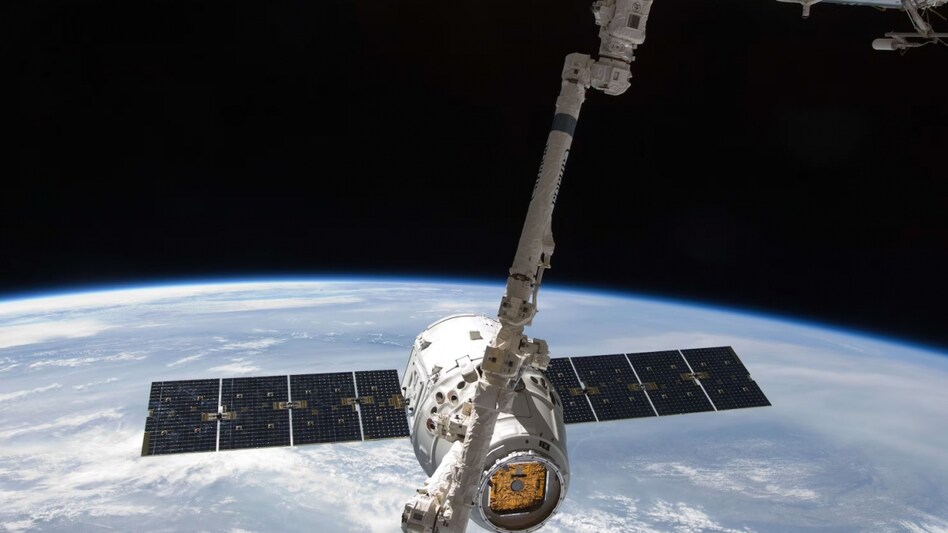 NASA
NASA
 NASA
NASAA team of researchers comprising members from NASA, MIT, and other renowned institutions has achieved a groundbreaking feat in space-to-ground laser communication. They have successfully doubled their previous record by establishing the fastest communication link to date. With impressive data rates of 200 gigabits per second, a satellite equipped with this technology could transmit over 2 terabytes of data in just a single 5-minute pass over a ground station. This remarkable advancement opens up numerous possibilities for scientific exploration and discovery.
Jason Mitchell, an aerospace engineer at NASA's Space Communications and Navigation program, emphasises the immense implications of this achievement, stating, "The implications are far-reaching because, put simply, more data means more discoveries."
The groundbreaking communication link, named TeraByte InfraRed Delivery (TBIRD), operates from an orbit approximately 530 kilometres above the Earth's surface. Launched into space in May of the previous year, TBIRD initially achieved downlink rates of up to 100 Gb/s with a ground-based receiver in California by June. This speed is 100 times faster than most cities' quickest internet speeds and over 1,000 times faster than traditional radio links used for satellite communications.
While terrestrial data networks rely on laser communications through fibre optics, high-speed laser-based internet for satellites has not yet been realised. Current space agencies and commercial satellite operators primarily employ radio waves for communication with space objects. However, laser communications utilising infrared light, which possesses a much higher frequency than radio waves, enable significantly higher data rates.
Additionally, the team of scientists is eager to expand the application of this groundbreaking technology to various scenarios. Mitchell emphasises their plans to enhance TBIRD's capabilities to facilitate future missions to the moon. Considering the vast distance of approximately 400,000 kilometres between the Earth and the moon, achieving data rates in the range of 1 to 5 gigabits per second (Gb/s) may not seem like a significant improvement. However, according to Mitchell covering such a vast distance is no small feat, and even these seemingly modest data rates would greatly enhance communication capabilities for lunar missions.
Kat Riesing, an aerospace engineer and a member of the TBIRD team at MIT Lincoln Laboratory, explains the limitations faced by current satellites, stating, "There are satellites currently in orbit limited by the amount of data they are able to downlink, and this trend will only increase as more capable satellites are launched." She further highlights the significance of TBIRD in enabling missions that collect vital data on Earth's climate, resources, and astrophysics applications, such as black hole imaging.
Also read: 'Twitter 2.0': Elon Musk's Twitter CEO pick Linda Yaccarino on future of the platform
The concept of TBIRD was initially developed by MIT Lincoln Laboratory in 2014 as an affordable, high-speed data access solution for spacecraft. To reduce costs, the team utilised commercially available components that were originally developed for terrestrial applications. These components include high-rate optical modems designed for fibre telecommunications and high-speed, large-volume storage devices for data retention.
TBIRD was deployed on NASA's Pathfinder Technology Demonstrator 3 (PTD-3) satellite, a compact CubeSat weighing around 12 kilograms, roughly the size of two stacked cereal boxes. The TBIRD payload, no larger than an average tissue box, was launched into orbit on SpaceX's Transporter-5 rideshare mission from Cape Canaveral Space Force Station in Florida on May 25, 2022. The compact form factor of TBIRD was made possible by industry advancements in small, low-power, high-data-rate optical transceivers.
Developing TBIRD presented several challenges for the research team. Firstly, terrestrial components are not designed to withstand the extreme conditions of space travel and operation. For instance, during a thermal test simulating the harsh temperatures in space, the fibres in the optical signal amplifier melted due to the absence of atmospheric cooling. To overcome this issue, the researchers collaborated with the amplifier's vendor to modify it, allowing it to release heat through conduction instead.
Additionally, laser beams from space to Earth can experience distortion due to atmospheric effects and weather conditions, leading to power and data loss. To compensate for these challenges, the team developed their own version of automatic repeat request (ARQ), a protocol that controls errors in data transmission. The ground terminal utilises a low-rate uplink signal to inform the satellite to retransmit any lost or damaged data frames.
Also Read
'Buying Netflix at $4 billion would've been better instead of...': Former Yahoo CEO Marissa Mayer
ChatGPT beats top investment funds in stock-picking experiment
For Unparalleled coverage of India's Businesses and Economy – Subscribe to Business Today Magazine